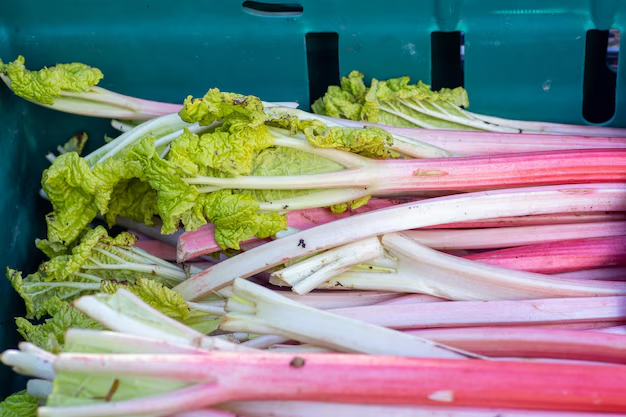How To Keep Your Celery Crisp: Simple Tips for Longer Freshness
Celery, with its invigorating crunch and refreshing taste, is a go-to staple in many households. Whether you're dicing it for a salad or using it for a healthy snack, there's nothing quite like the satisfying crispness of fresh celery. However, you may have noticed that keeping it that way in the refrigerator can sometimes be a challenge. If you've ever encountered limp, lifeless celery, fear not. Below are some tips and insights to help you maintain your celery's crispiness and maximize its shelf-life.
🥬 Understanding Celery: What Keeps It Crisp?
The Anatomy of Crunch
Celery’s satisfying crunch is largely due to its high water content, which makes up about 95% of its composition. The cellular structure of celery is designed to store water, resulting in the firm and crisp texture we love. However, once harvested, celery begins to lose moisture through evaporation and transpiration, leading to wilting.
The Role of Freshness
The journey to keeping celery crisp begins with selecting the freshest possible stalks. Look for celery that's vibrant in color, with firm stems and fresh, green leaves. Avoid stalks that are discolored, have soft spots, or appear limp, as these are indicators that the celery is past its prime and may not stay fresh for long.
🗄️ Best Ways to Store Celery in the Refrigerator
🧻 Wrap It Well
One of the simplest yet most effective methods to store celery involves wrapping it tightly in aluminum foil. This approach allows ethylene gas, which accelerates spoilage, to escape while preventing further moisture loss. Once wrapped, keep the celery in the crisper drawer to maintain optimal humidity.
🌊 Submerge in Water
For those who prefer a hands-off approach, submerging celery in water can be a great option. Place the stalks upright in a jar or container filled with water, much like a bouquet of flowers. This method allows celery to draw in water, keeping it hydrated and crisp.
🌬️ The Breathable Bag Method
Another alternative is to store your celery in perforated plastic bags or breathable produce bags, which balance moisture retention with adequate airflow. This reduces the scenario where too much moisture results in wilting or rot.
🧊 Freezing Yes or No?
While freezing is an excellent method for many fruits and vegetables, it should be used with caution for fresh celery. Freezing can change its texture, making it less crisp. However, if you plan on using celery for cooked dishes like soups, freezing chopped celery can be practical. Just blanch it first to preserve color and flavor.
🌿 Maintain the Quality: Extra Tips for Longevity
🥤 Trim and Store
For a quick refresh, consider trimming the ends of the celery stalks before storing them. This process exposes the fresh tissue, allowing better moisture absorption, whether wrapped or submerged.
🚰 The Water Refresh Trick
If your celery starts showing signs of wilting, place the stalks in a bowl of ice water for a few hours. The crispness often comes back as the cells rehydrate and firm up.
🚫 Avoid the Refrigerator Door
While it might be convenient, the refrigerator door isn't the best place for celery. Temperature fluctuations from frequent opening and closing can speed up deterioration. Instead, store celery in the main body of the fridge where the temperature is more consistent.
☀️ Seasonal Factors and Celery Storage
Spring & Summer vs. Fall & Winter
Celery grown in different seasons has varying moisture levels and might respond differently to storage. During peak seasons (typically spring and summer), it may have a higher moisture content, allowing for longer storage times under the right conditions. In colder months, the celery might dry out faster without proper precautions.
🧑🌾 Organic vs. Conventional
Understanding whether your celery is organic or conventionally grown can also influence freshness. Organic celery, without synthetic wax coatings, may experience faster moisture loss, requiring more vigilant storage methods to maintain crispness.
🌈 A Rainbow of Uses: Don't Let It Go to Waste!
Creative Culinary Uses
If your celery is past its prime for fresh snacking but still good to use, consider exploring other culinary applications like making a celery puree, adding it to stews or soups, or stir-frying with other vegetables. These applications are forgiving with texture changes and still allow you to enjoy its nutrition.
🍹 Celery Juice!
Celery juice has gained popularity for its potential health benefits. If you've got a juicer at home, a bunch of wilted celery can easily transform into a refreshing drink, maximizing usage and preventing waste.
📋 Quick Summary: Top Tips for Keeping Celery Crisp
Here's a handy list of key strategies to help your celery stay at its best:
- 🥇 Choose Fresh: Select firm, vibrant celery stalks at the grocery store.
- 🧻 Aluminum Wrap: Wrap in aluminum foil to extend freshness while allowing gases to escape.
- 🌊 Stand in Water: Store stalks upright in a glass of water, refreshing it periodically.
- 🥤 Trim Ends: Cut the ends of the stalks for better water absorption.
- 🚫 Avoid Fridge Door: Store celery in the crisper drawer, not in the door where it's warmer.
- 💧 Ice Water Bath: Revive limp celery with an ice water soak.
Maximizing the crispness and freshness of celery is about understanding its nature and providing the right environment. With these methods, you're well-equipped to enjoy your celery for its entire lifespan in your fridge without losing that delightful, refreshing crunch. By following these practices, not only will you save on food waste, but you'll also amplify your culinary delights with the inviting texture and taste of perfectly preserved celery.
By integrating these strategies into your kitchen routine, you'll extend the life of this nutrient-rich vegetable and maintain its crunch, enhancing both your meals and your experience. Happy crunching!
